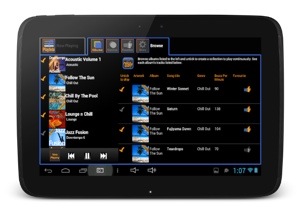The BBC recently reported that Netflix had, “agreed to pay US telecoms giant AT&T to ensure its content is delivered to users smoothly.”
This highlights the need for service providers who stream content that need a consistent streamed service with no interruptions to gain a quality of service from networks that backs up their service commitments to their clients.
For Netflix clearly this is important. Netflix customers will stop subscribing if they can not get to watch a film or program without having it interrupted. Yet whilst Netflix can work hard to optimise the stream technology and add more and more servers with faster processors it can’t do much to help the client’s end broadband connections and internal LAN netoworks (be that business or consumer).

Even satellite distribution sometimes relies on local networks to enter business locations to supply music and can be effected by congestion.
Telcos manage their broadband services in the same way as they have offered telecom phone services for many years; by working out typically how many clients are using their services at once and then grouping up users to share the same network resources.
Whilst this model works well with clients picking up the phone to make a call, it’s a very different challenge when it comes to ‘always on’ technology. Apps these days want to stay connected and feed back a lot of data to central servers which means broadband traffic, even whilst users aren’t active, is busy.
So while this ‘chatter’ is constantly happening in the background of our networks, streamed content happens when users are clicking links and pressing play buttons to receive content. Video is probably the most demanding of media to stream, Netflix will stream only as much as two hours of content per customer at any one time. However background music streaming requires a consistent service for much longer.
With consumer businesses such as Spas, retailers and hotels being open most of the hours of a day the need for a consistent stream of audio is a challenge.
 Of course, we are all gaining access to larger bandwidth services yet higher bandwidth services are just trying to keep up with the demands from apps and other new services clients want to use.
Of course, we are all gaining access to larger bandwidth services yet higher bandwidth services are just trying to keep up with the demands from apps and other new services clients want to use.
While great strides have taken place with streaming technology since 2000 when some of our team first worked on streaming services, there is more and more demands on networks with new consumer and business applications that will cause congestion of networks increasingly at busy periods of the day.
The challenge for media providers such as Netflix and Melody Pods is to ensure your services aren’t disrupted.
Whilst Netflix spends on higher quality network services that adds to the price of their services, Melody Pods avoids the bandwidth availability challenge altogether.

Never worry your music will be interrupted by network congestion with the Melody Pods download and play music service.
Background music systems don’t need to be streamed, they can be delivered and played without network connectivity if your service provider enables you to choose the music you want to hear and makes it a personal service.
Streaming service providers offer services that simplify the choice by offering a centralised stream of music that is only offered on a music genre channel basis and so can not offer you a personal choice to the wide variety of music you may need to complete your full day, nor meet each of your clients and service needs.
Please call for a chat to hear more about our leading edge technology serving up high class music to businesses every day.
| [formcraft id=’4′] |


